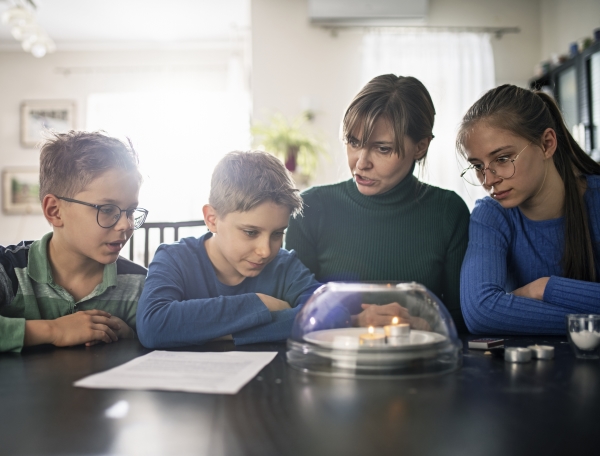Is your child a fan of science? Foster their curiosity and love for discovery with different science sets. Although there are available kits you can buy that contain everything you need to do an experiment, there are also DIY projects that don’t require special tools.
Here are 9 science experiments you can do at home.
Chemistry
1. DIY Slime
There are endless sets for kids who love chemistry that you can find online, but you can start with the tools you have at home. Introduce polymers to your children by making slime through mixing sodium Borate or Borax powder with water and glue. Add some food coloring or glitter to make it more fun!
2. Diet Soda and Mentos
Who hasn’t heard of this classic backyard experiment? But it being famous doesn’t make it any less fun! Instead of baking soda, mentos make for a more entertaining fountain. How does it work? The candy breaks the carbon dioxide gas and water apart to produce bubbles. Since mentos is heavy, it sinks down to the bottom of the water fast, producing an amusing explosion of soda bubbles.
3. Invisible Ink
Play detective with your kids with baking soda, paper, water, paintbrush, and a heat source (usually a light bulb) in this nontoxic experiment. Using baking soda as the “ink” and writing on paper to create a secret message. Once the message is dried and invisible, your kids will surely enjoy figuring out how to read the message! Tip: Hold the paper against a light bulb or a candle or ask them to paint it with grape juice!
4. Colorful Density Jar
Easily teach your kids about density with this experiment – the dense materials sink at the bottom while the light ones stay on top. Not everything mixes together, especially if they have different densities. You can make your kids understand this through the use of the following materials:
- Water
- Liquid soap
- Syrup (pancake or corn)
- Honey
- Vegetable oil
- Lamp oil
- Rubbing alcohol
Tip: Add colors to the water and rubbing alcohol, so they’re easier to identify once poured in the jar.
Physics
5. Understanding Gravity
Gravity keeps you grounded. It’s an easy concept, but there’s a more amusing way of explaining it to your children. Collect balls of different sizes and weights, then pick a safe area in your house or in your local playground where your kid can drop the items safely. You can ask them which ball they think will hit the ground first and make them record a time for each ball drop with you.
Dropping the balls separately will end with them having the same time before hitting the ground, but if two balls are dropped at the same height, the result would be different because of friction and air resistance. Don’t worry! You don’t have to explain everything to your kids just yet, but explaining how things in space float will be easier now.
6. Egg Drop
Get your creative gears running with the exciting egg drop engineering challenge! The goal? To create a container that will safely keep the egg intact after dropping it from somewhere elevated.
You don’t have to go out and buy paraphernalia for this experiment. Pick everyday items – cotton, used cupcake papers, pencils, sponges, papers – the possibilities are endless! Bond with your kids over designing the perfect padding for the eggs and explaining kinetic and potential energies with a dash of fluid dynamics.
7. The Diving Fish
Did your kids ever ask how fish sink or float in water? Did you know the answer? Using ketchup packets (you can draw over them to make them look more like a fish) placed inside a bottle, you can illustrate how fishes work with water. At first, the packet will float because it has air inside it, but when the bottle is squeezed, the air bubble is contained into a smaller space. Fishes have air bladders that allow them to store air in their stomachs, making movement in water easy. Fishes inhale more air when they want to go up and exhale more air when they want to swim down.
Biology
8. Water Travel
Materials with spaces (or pores) that can accommodate water can store and move it. This is through the properties of adhesion and cohesion. Water molecules stick together, making it easier for them to move from one place to another. For this experiment, you need three jars and two paper towels. Fill the two jars with water and put the empty jar in the middle. You can add food coloring to one or both of the jars, so it’s easier to observe. Then put the paper towels connecting the colored water jars to the middle and watch the water move from one jar to the other.
9. Breaking Bones
A simple experiment to make kids realize the importance of calcium and drinking their milk is by putting a drumstick bone (cleaned) in a vinegar bath. After a while, the bone will be malleable like rubber because the vinegar breaks down calcium.
Discover Science with Your Kids At Home
There are many other experiments that you can try while in the comfort and safety of your home. Beat the quarantine boredom and try these activities – you’ll not only have fun bonding with your kids but will also teach them the wonderful world of science!
